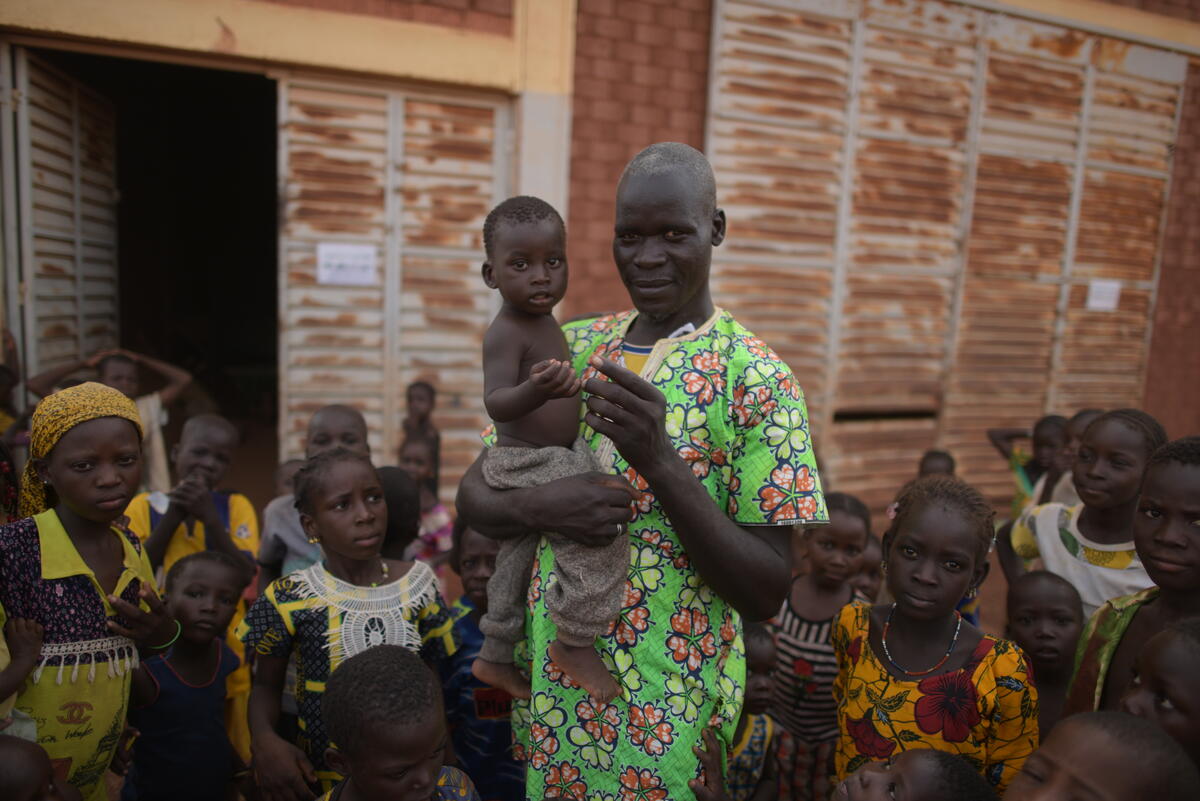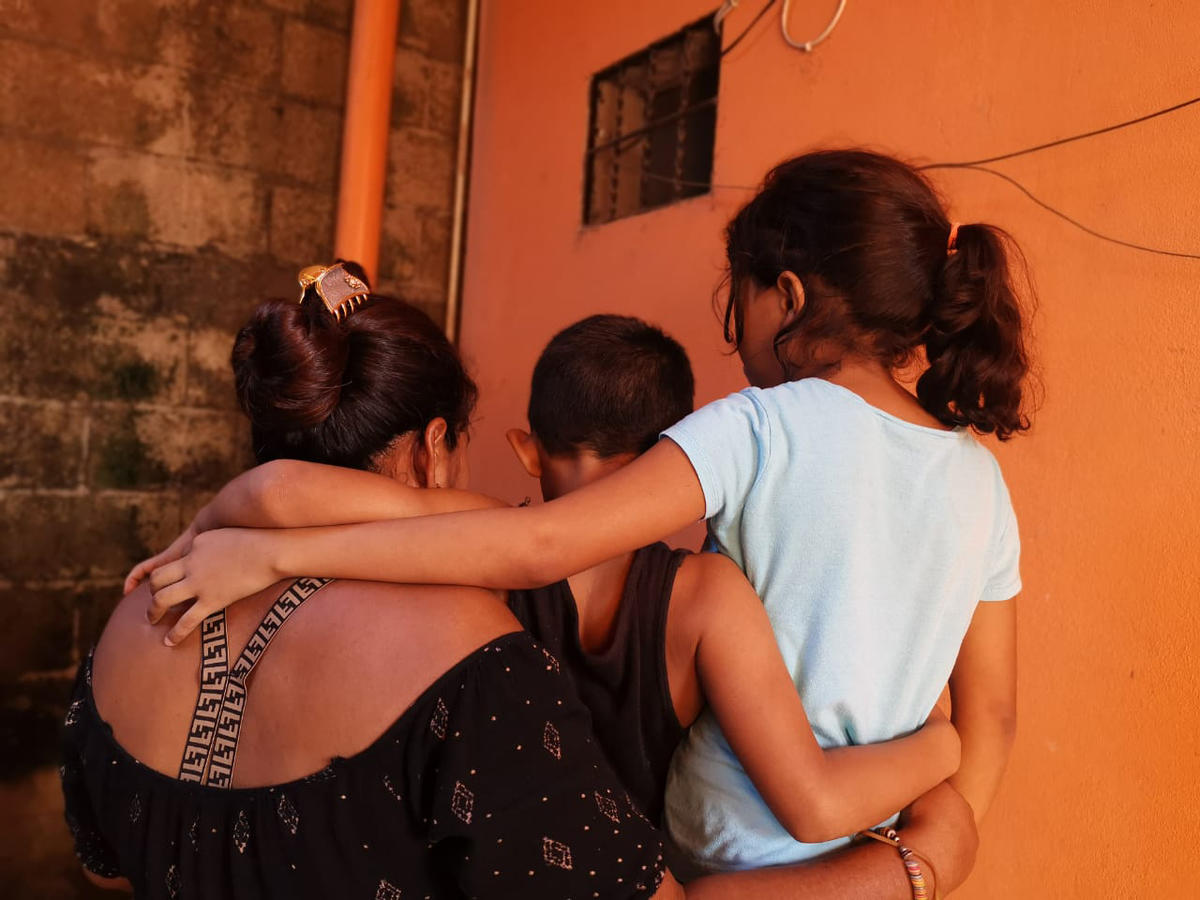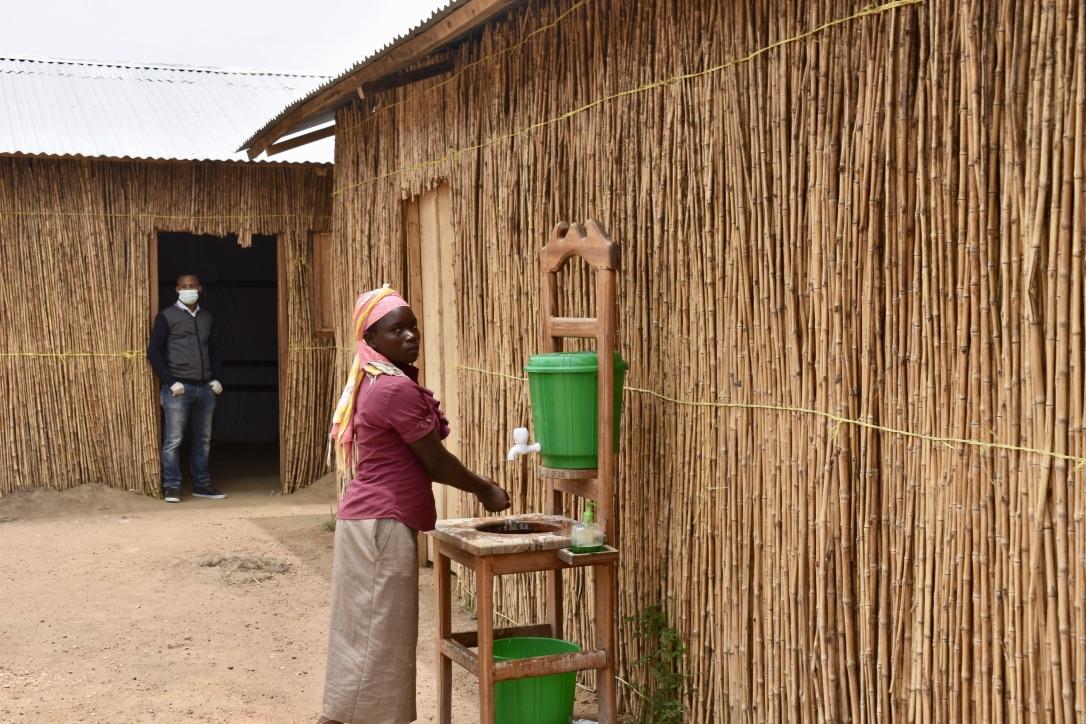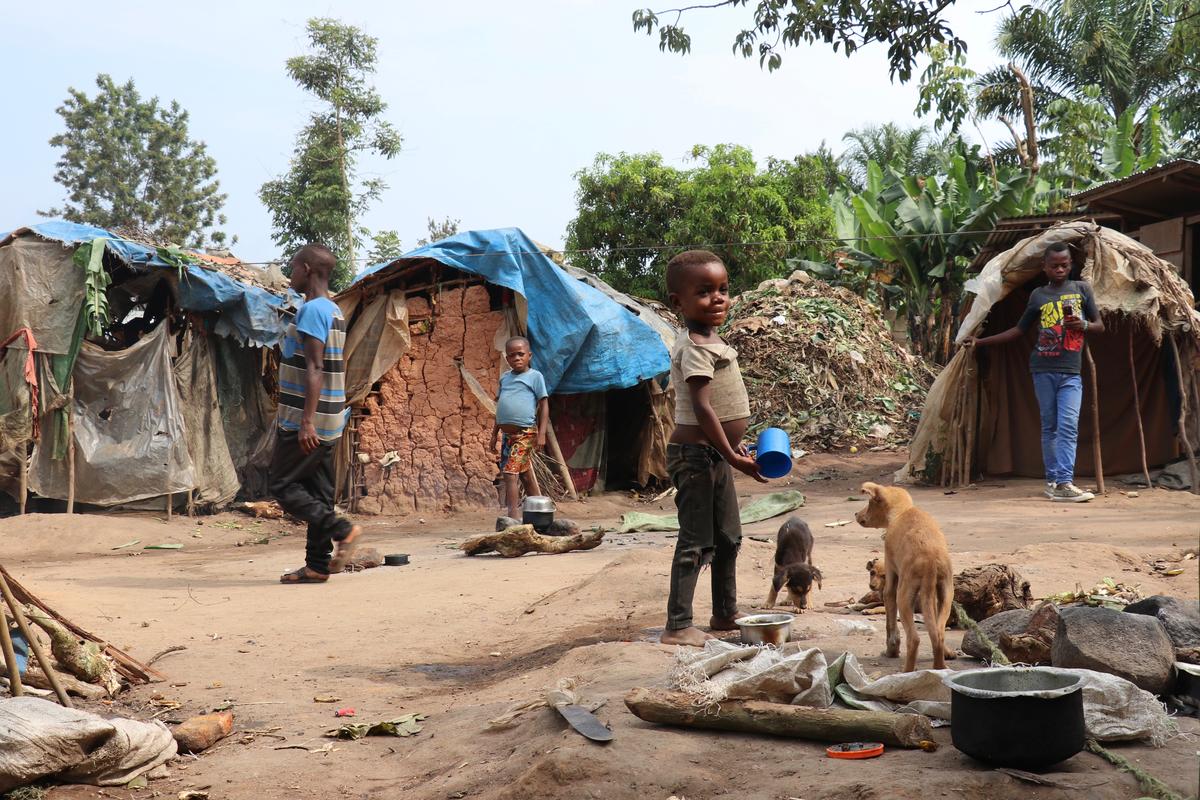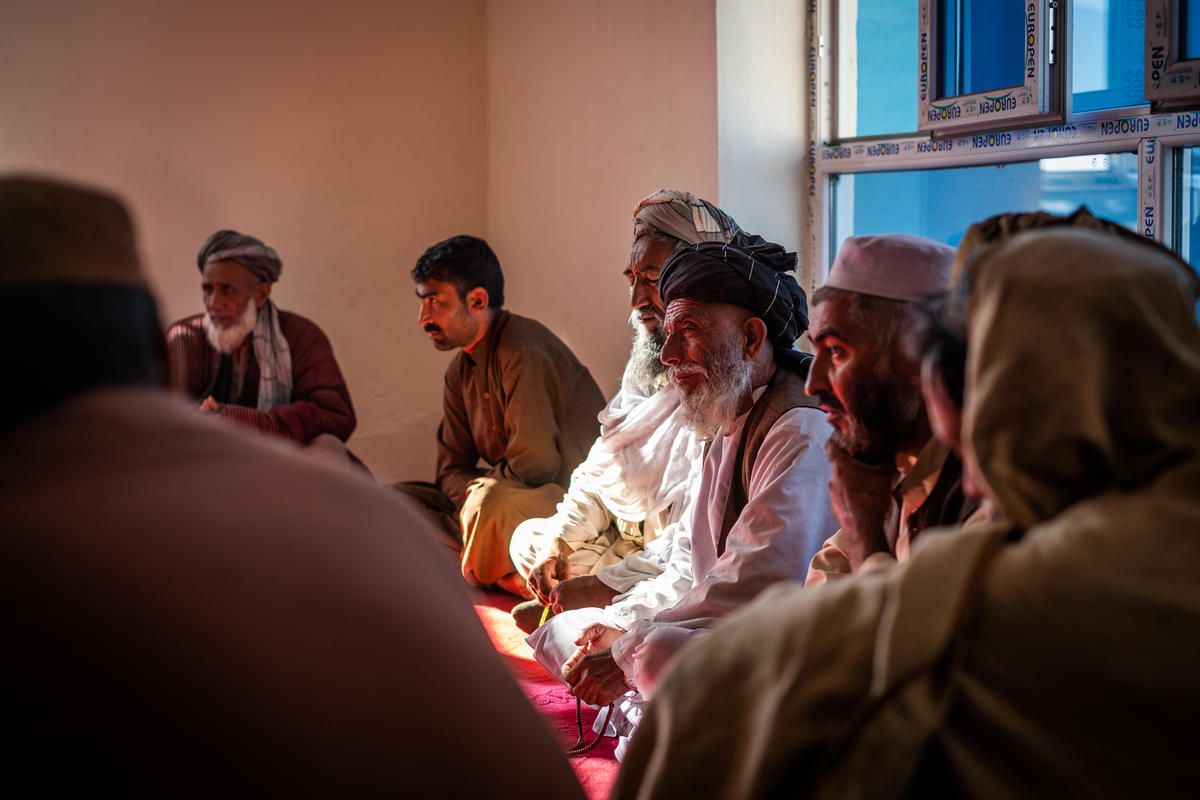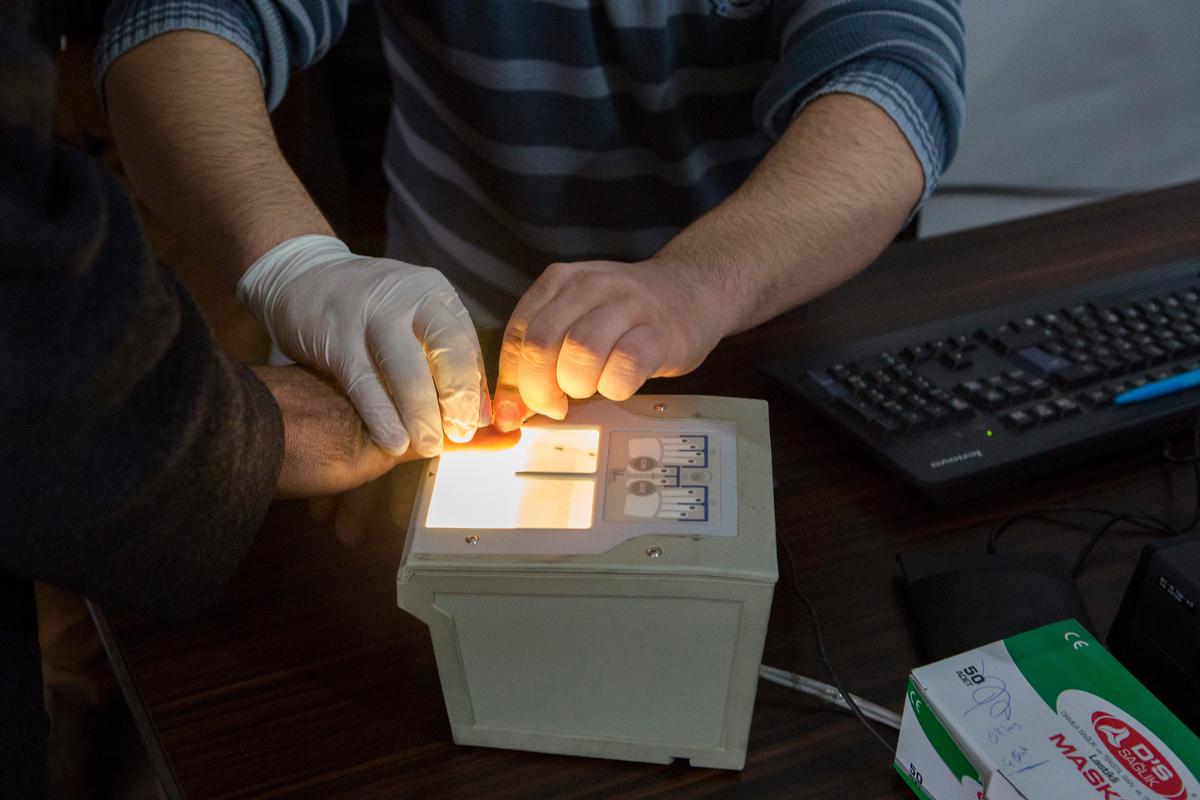Thriving after a crisis: Security and refugee empowerment in Dadaab
Thriving after a crisis: Security and refugee empowerment in Dadaab

IFO CAMP, Kenya, April 26 (UNHCR) - Several weeks ago, eight-year-old Camilla Mohamed Ali arrived at the hospital severely malnourished, swelling with edema and in a coma. And for weeks she passed though the intricate, razor-like days during which she teetered between life and death.
Doctors and nurses treated her as if every breath may be the last. She was nursed with special formulas and monitored constantly. Doctors placed a tube in her nose allowing her to take in nutrients. After two weeks she began to show signs of consciousness. Now she is alert and awake but, at 10 kilogrammes, still weighs about as much as an average one-year-old.
"She has come very far because when she arrived I thought she may be doomed," says Julius Gichunju Ndirangu, 32, the registered nurse and nutritionist at the GIZ (German Society for International Cooperation) hospital in Ifo Camp - part of the Dadaab refugee complex - who helped take care of the little girl. "It is more satisfaction than any salary can buy to see her come back from the dead."
UNHCR staff members and refugees who work and reside in the sprawling complex of camps outside Dadaab feel as though they, too, have survived a critical trial. Over the past year, they have borne the burden of arguably the biggest crisis in the camp's 20-year existence. Moreover, they have struggled to contend with the kidnapping of three NGO workers, the bombing of vehicles and the deaths of policemen and refugee leaders. The crisis taught them valuable lessons on the importance of their work and the critical role that refugees themselves have in their own welfare.
"What we are facing here is a new reality," said Dominik Bartsch, UNHCR's head of operations for Dadaab. "This kind of insecurity that we've just experienced will stay with us. As a result, we need to adapt to this new operational environment and find different ways of reaching out to ensure that we can deliver effective protection to the refugees, no matter how difficult the security challenge may be."
In the last few months, security in Dadaab has been stable, with staff members from UNHCR and its partner institutions going out into the field daily to serve the needs of the refugee community. It is a stark contrast from October 13 last year, when two Spanish logisticians from UNHCR partner Médecins Sans Frontières were kidnapped and their driver shot in Dadaab's Ifo camp.
The camp immediately went into lockdown as the Kenyan military crossed into Somalia in pursuit of Somalia's Al-Shabaab militia. A police vehicle travelling in early November from Hagadera camp to Dadaab struck an improvised explosive device, which did not detonate. On December 5, a police officer was killed and three others seriously injured by an explosion in Ifo camp.
Then, on December 29, a refugee leader was shot several times as he entered his compound. The victim was rushed to a camp hospital and later died as he was being evacuated to Nairobi, the Kenyan capital. On January 1, a second refugee leader was shot and killed.
The GIZ hospital in Ifo was one of the many front lines in the crisis. A brief evacuation of the hospital took place, but permanent staff were on call for emergencies. Refugees with nursing experience maintained the facility. "The patients were very many and the staff very few," said Faisal Abdulahi Nunow, a 23-year-old nurse assistant. "We were refugees, but we were trying our best."
When the staff returned they faced a flood of patients. The stabilization centre, which is meant to treat severely malnourished children, was chock-a-block. Hospital staff worked 22-hour days treating those in need and working through both trepidation and exhaustion. Patients were seen shutting hospital windows and closing doors, fearing who might be on the streets. But the work continued. One nurse herself had to be hospitalized after she developed edema from standing on her feet for long hours.
"Sometimes you feel like, 'Why do I risk my life?'" says nurse Ndirangu. "Then you look at the patient who is staring at you. Death is ready to claim his life. You think to yourself, 'If I leave my patients I cannot live with myself.'"
While hospital operations were up and running again, other basic services also had to be provided. UNHCR and its partners continued with the delivery of food and other critical items. Meanwhile, a group of refugee religious leaders took it upon themselves to look after the most vulnerable. They contacted members of the Somali diaspora in Nairobi and Garissa to ensure that food continued to flow into the camp, supplementing supplies provided by UNHCR and its partners.
"We worked with the single mothers and those who are elderly," says Shamsuddin Mohamed Abdi, 45, a religious leader from Dagahaley camp who is in charge of the camp's emergency community monitoring response team. "We were feeding 3,500 families every week."
The continuation of relief supplies and the stepping up of refugee leadership had a calming effect on a community that at times feared it would be abandoned. When UNHCR staff workers were permitted to return to the camps, first on the agenda was to listen to community concerns and provide reassurance.
Meanwhile the agency had to develop methods to begin to address the new security environment. Security was beefed up to protect such critical centres as hospitals. A team from the UN Mine Action Service (UNMAS) began teaching UNHCR staff and NGO workers how to spot an improvised explosive device. "The idea here is to give people the information and basic awareness that they need so that when they are in the field they can work with both raised awareness and confidence," says James Wilson, trainer for the UNMAS.
The training was part of a larger effort, spearheaded by UNHCR and called the Operational Continuity Plan, to cope with possible future disruptions. The plan requires new approaches to delivering basic services with different levels of staffing, and more aggressive training of refugees to provide these services in the camps.
"We have to continue operations despite the security constraints that we have in the future," says Fafa Attidzah, head of UNHCR's sub-office in Dadaab. "That is based on our experience of agencies being called into their compound due to insecurity. The idea is to ensure that we are able to deliver services no matter what."
By Greg Beals in Dadaab, Kenya



